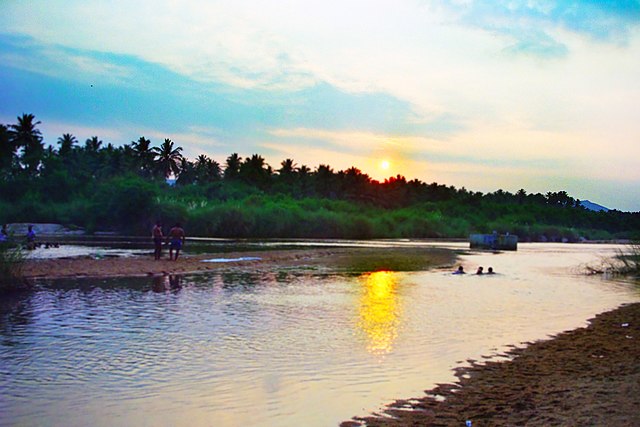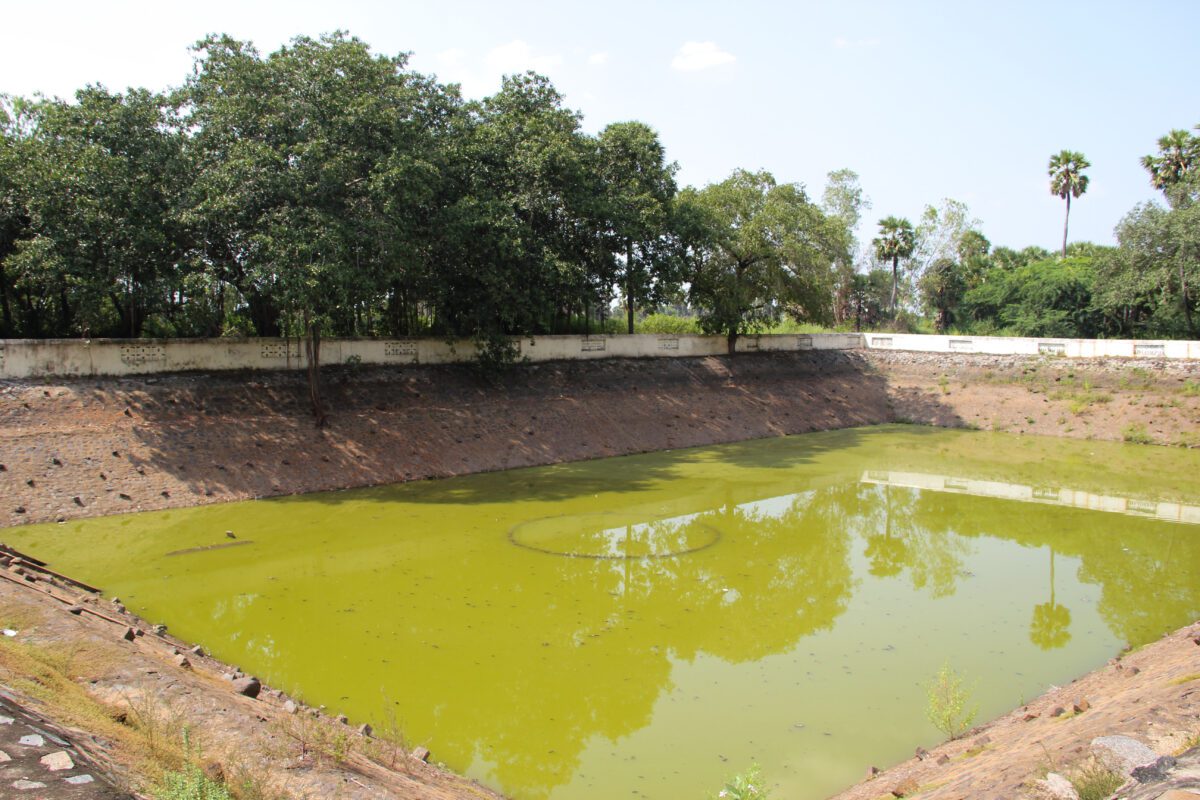The tank systems of Tamil Nadu stand as a testament to the ancient wisdom and engineering prowess of its forefathers, who crafted a network of water structures that not only sustained life but also shaped the socio-cultural fabric of the region.
The tank systems in Tamil Nadu have roots that stretch back centuries, with kings and communities recognizing the vital importance of water management in an agrarian society. The Pallava and Pandyan kings, between AD 500 and AD 900, played a pivotal role in the development of tank irrigation, creating a legacy of sustainable water systems that endure to this day.

The Eri, an earthen embankment captured the precious monsoon runoff. Picture fertile plains dotted with these structures, some grand and sprawling, others nestled amidst villages. The Vaigai River, for instance, fed a network of eris in Madurai, the erstwhile temple city. These eris weren’t just reservoirs; they were lifeblood. They provided water for irrigation, drinking, and even religious ceremonies. Villagers would gather at the eris for their daily ablutions, creating a vibrant social space. Beyond the village eris lie the magnificent system tanks – a testament to large-scale water management. Imagine the Grand Anicut across the Kaveri river, built over two millennia ago. This engineering marvel diverted water into a network of canals, nourishing vast swathes of farmland. The meticulous design, with weirs and sluices, ensured optimal water distribution, turning parched lands into verdant fields. These system tanks weren’t just feats of engineering; they were symbols of community cooperation. Their maintenance and upkeep were a village affair, fostering a sense of collective responsibility.These tank systems were not merely utilitarian structures but symbols of prosperity and communal harmony. The construction of tanks was celebrated in poems and inscriptions, highlighting the reverence accorded to those who built and maintained these water bodies. Sluices, gates, and channels were meticulously designed to regulate water flow, showcasing the intricate knowledge of hydraulic engineering possessed by the ancients.
Today, many eris lie silted and neglected, a stark reminder of the consequences of neglecting our heritage. Many of Tamil Nadu’s tank systems stand as silent witnesses to a bygone era, their architectural grandeur faded but their historical and cultural value undiminished. These tanks continue to play a crucial role in irrigation, sustaining agriculture and livelihoods in the region. Moreover, they serve as living monuments to Tamil Nadu’s rich heritage and traditional water management practices. Efforts to conserve and restore Tamil Nadu’s tank systems are underway, driven by a recognition of their intrinsic value as historical landmarks and ecological assets. Organizations and local communities are working together to preserve these structures, ensuring that their legacy is safeguarded for future generations. The revival of the Eris project in Kanchipuram district is a prime example. Here, communities have come together to desilt eris, restore canals, and promote sustainable water management practices. This initiative highlights the importance of heritage conservation, not just for preserving structures, but for reviving a way of life. Imagine restored eris teeming with life once more – farmers cultivating their lands, children splashing in the cool water, and communities celebrating traditional festivals around these vital sources. The possibilities are as vast and vibrant as Tamil Nadu’s cultural tapestry. The intricate design and engineering of these tanks are a testament to the sustainable practices of the past.

The future of Tamil Nadu’s tank systems lies in a harmonious blend of preservation and innovation. By integrating traditional water management techniques with modern sustainable practices, Tamil Nadu can ensure the continued relevance and functionality of these ancient structures. Rainwater harvesting, community-led conservation initiatives, and heritage tourism can all contribute to the revitalization of these invaluable assets. Tamil Nadu’s tank systems offer profound lessons in resource management, community resilience, and environmental stewardship. They remind us of the enduring value of traditional knowledge and the importance of preserving our cultural heritage in the face of rapid urbanization and climate change. By learning from these structures, we can chart a path towards a more sustainable future that honors the past while embracing the challenges of the present.
In conclusion, Tamil Nadu’s tank systems are not just relics of the past; they are living embodiments of a heritage that continues to shape the identity and resilience of the region. As Tamil Nadu navigates the complexities of water management in the 21st century, these ancient marvels stand as beacons of inspiration, guiding us towards a future where tradition and innovation walk hand in hand.
By – Sulagna Maitra
Sources:
https://www.jstage.jst.go.jp/article/tak/49/1/49_KJ00007183939/_pdf
https://books.openedition.org/ifp/10050?lang=en
https://dhan.org/conservationcouncil/pdf/status_small_scale_water_resources.pdf
https://www.mids.ac.in/assets/doc/WP_235.pdf
Image Credits –
https://www.indiawaterportal.org/articles/ancient-engineering-marvels-tamil-nadu
